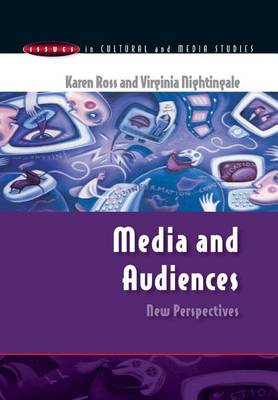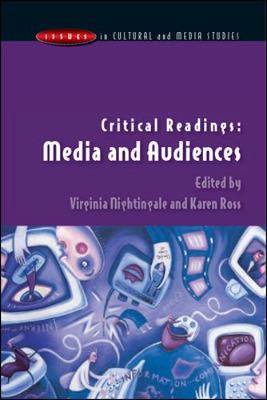Issues in Cultural and Media Studies
2 total works
Media and Audiences: New Perspectives
by Virginia Nightingale and Director Centre for Communication Culture and Media Studies Karen Ross
*How has the concept of 'the audience' changed over the past 50 years?
*How do audiences become producers and not just consumers of media texts?
*How are new media affecting the ways in which audiences are researched?
The audience has been a central concept in both in media and cultural studies for some considerable time, not least because there seems little point exploring forms of increasingly global communication in terms of their content if the targets of media messages are not also the focus of study. This book ranges across a wide literature, taking both a chronological as well as thematic approach, in order to explore the ways in which the audience, as an analytical concept has changed, as well as examining the relationships which audiences have with texts and the ways in which they exert their power as consumers. We also look at the political economy of audiences and the ways in which they are 'delivered' to advertisers as well as attending to the ratings war being waged by broadcasters and the development of narrowcasting and niche audiences. Finally, the book looks ahead to the future of audience research, suggesting that new genres such as 'reality TV' and new ICTs such as the internet, are already revolutionising the way in which research with audiences is taking place in the 21st century, not least because of the level of interactivity enabled by new media.
Critical Readings: Media and Audiences
by Virginia Nightingale and Karen Ross
*How have audiences become fragmented in the search for ratings?
*What next for audience research in the 21st century?
The study of 'audience' is a central concept in both media and cultural studies. Although it has become an academic fashion to turn away from imagining that groups of people can share common purpose or interests, there are still reasons enough for wanting to explore the way in which audiences behave, understand and interact with media texts in all their various forms, not least because of the vast sums of money which are persistently expended by advertisers and broadcasters trying to give 'the audience' what 'it' wants and therefore maintaining or preferably increasing market share. This Reader provides an opportunity to bring together some of the important developments in the history of audience and media studies and the significant research trajectories which have shaped the field until now. It is sometimes difficult to locate specific examples of audience research or discussions of research practice, as opposed to description, conjecture or critical reflection about audiences, which are in abundant supply: the Reader allows students and lecturers to source original research commentaries and better understand the rationale, findings and forms of analysis undertaken at different points in the field's research-based career.

